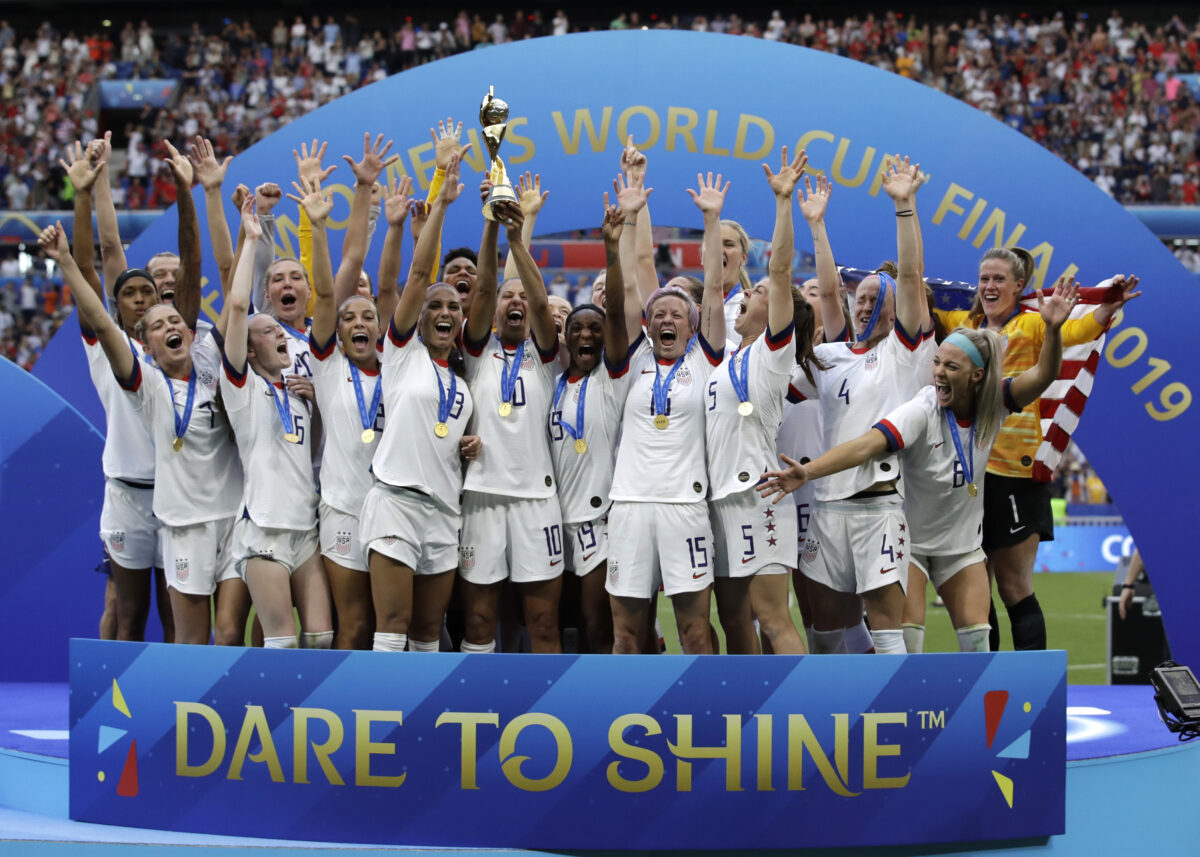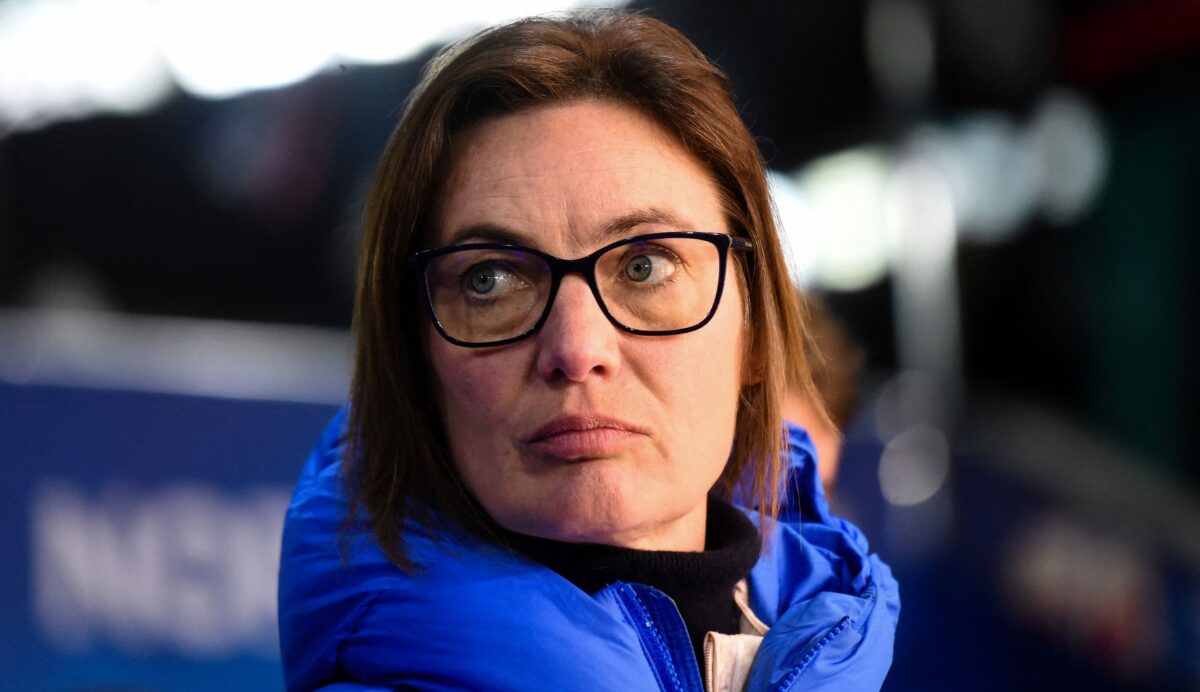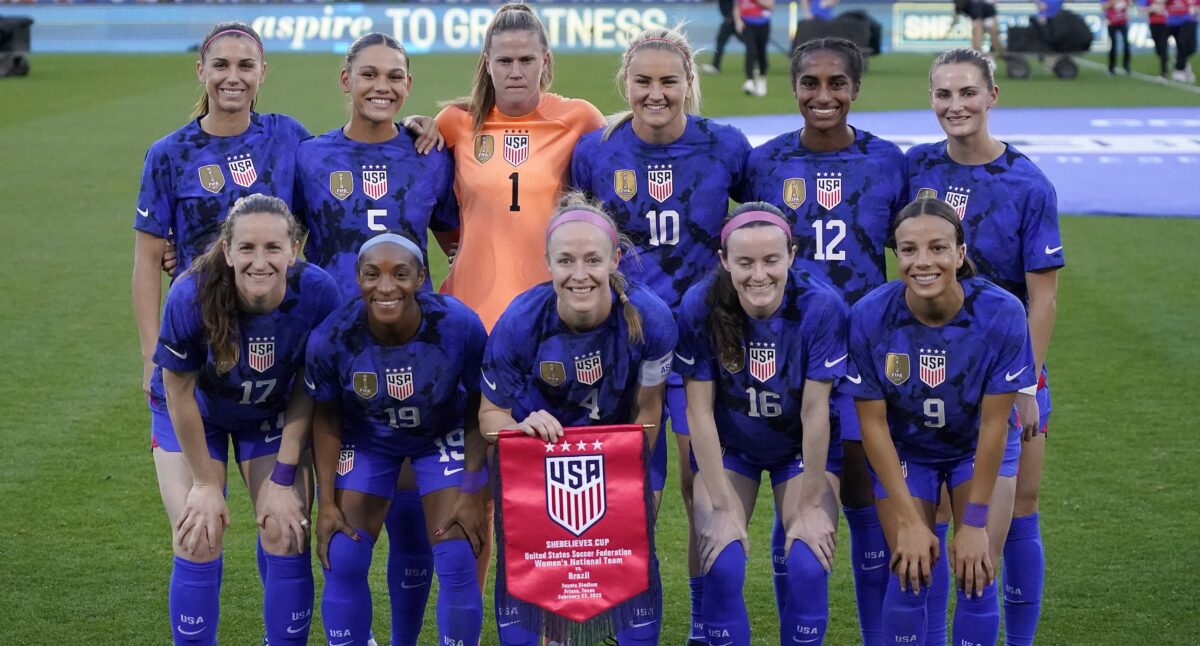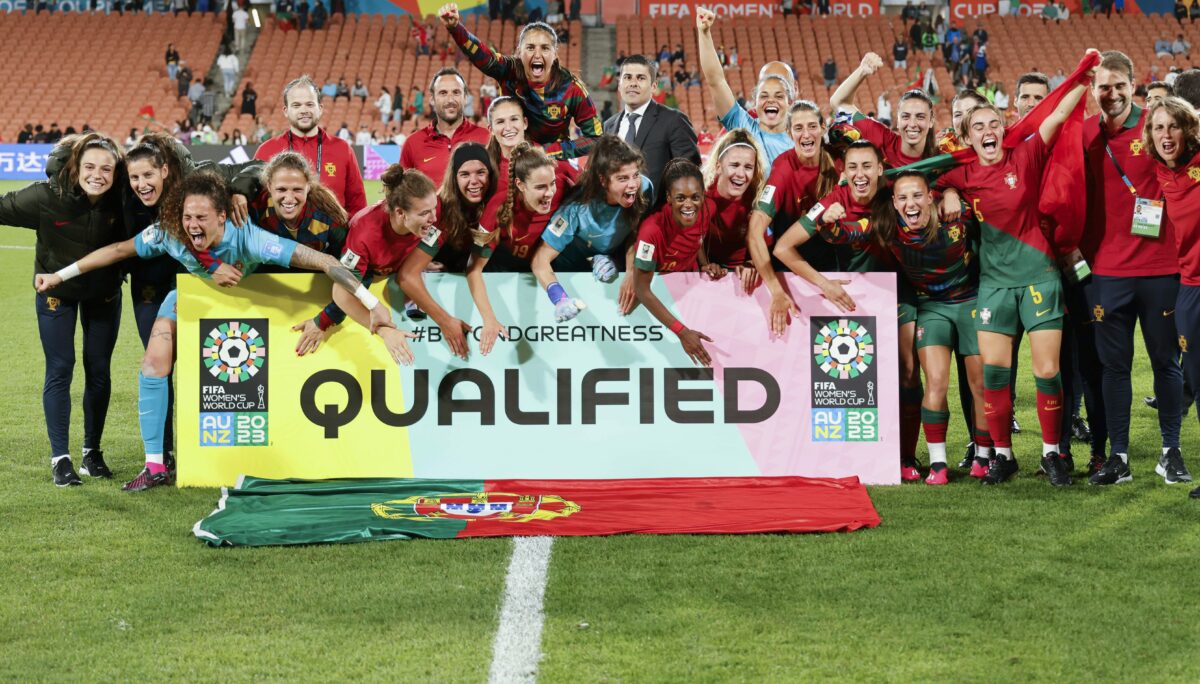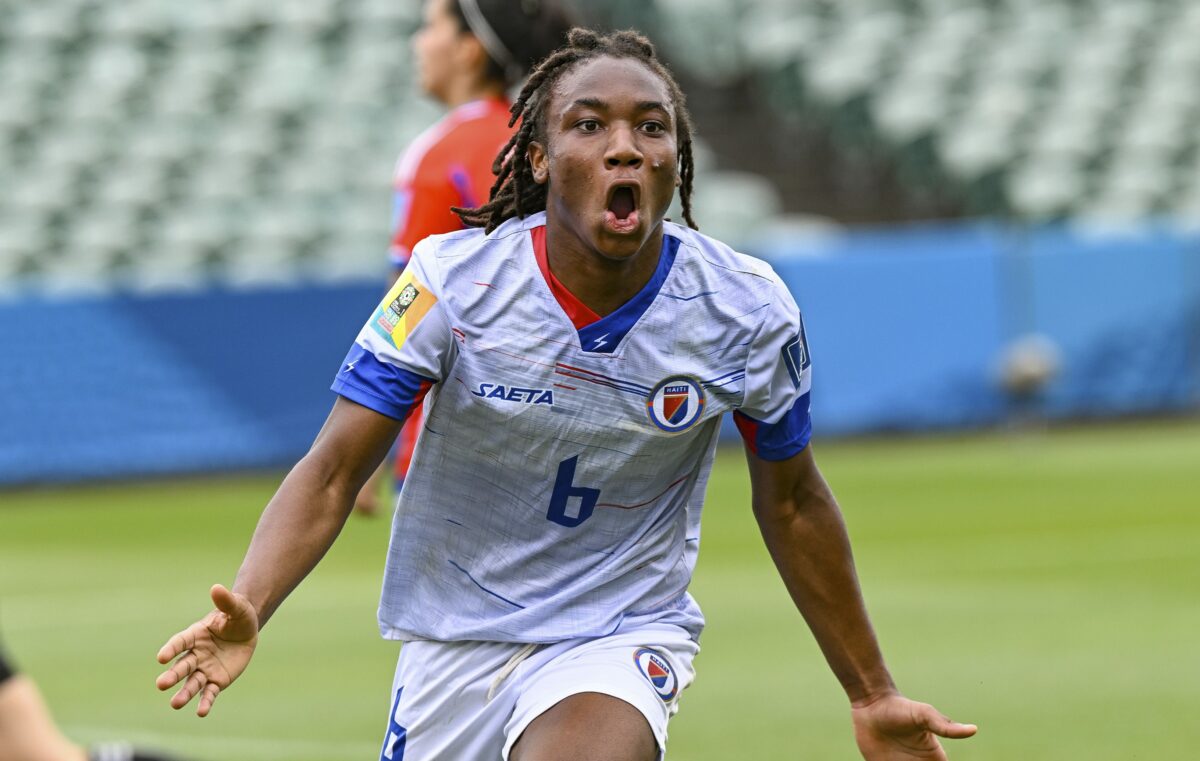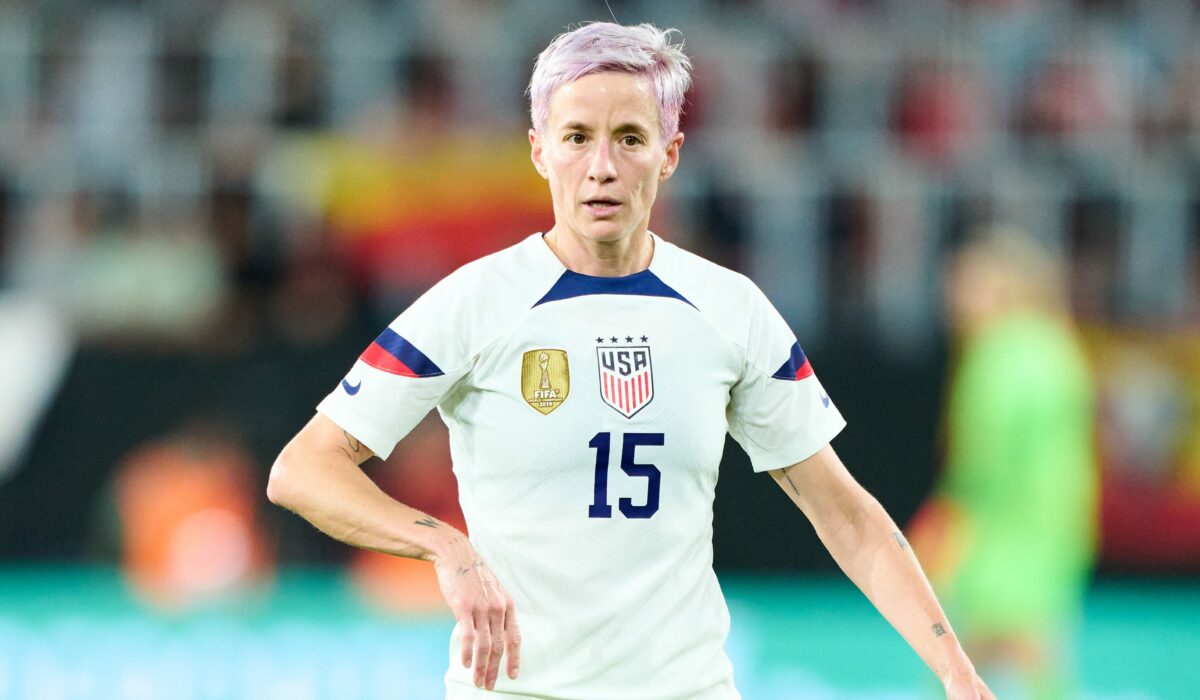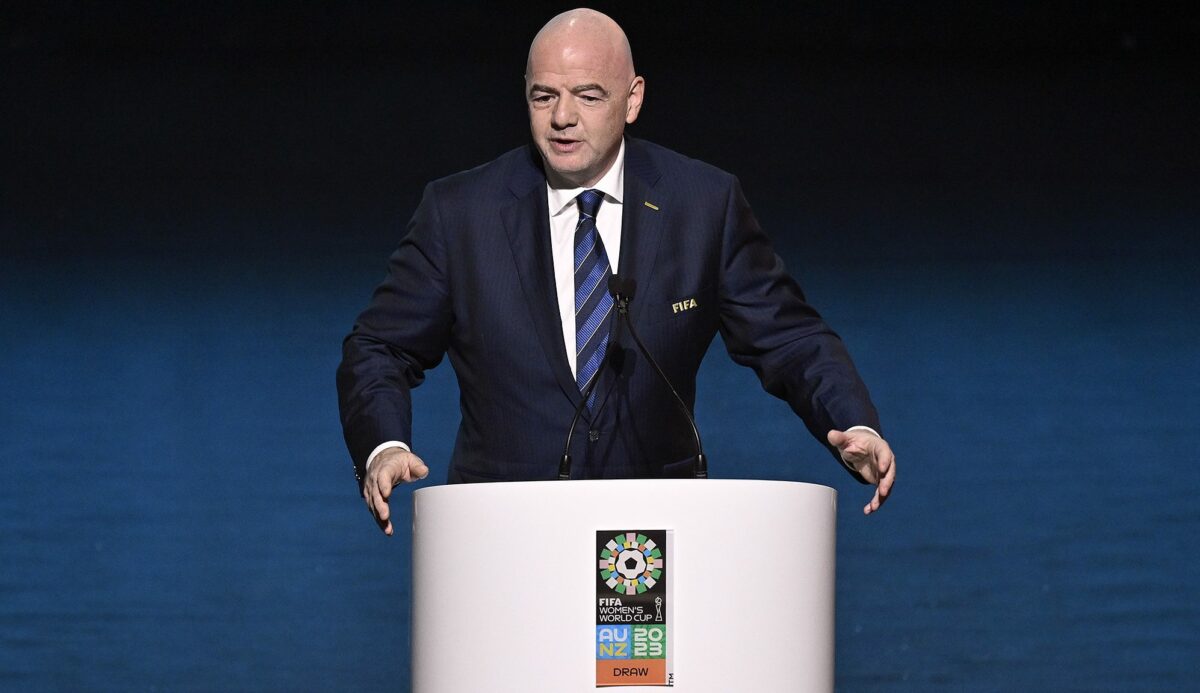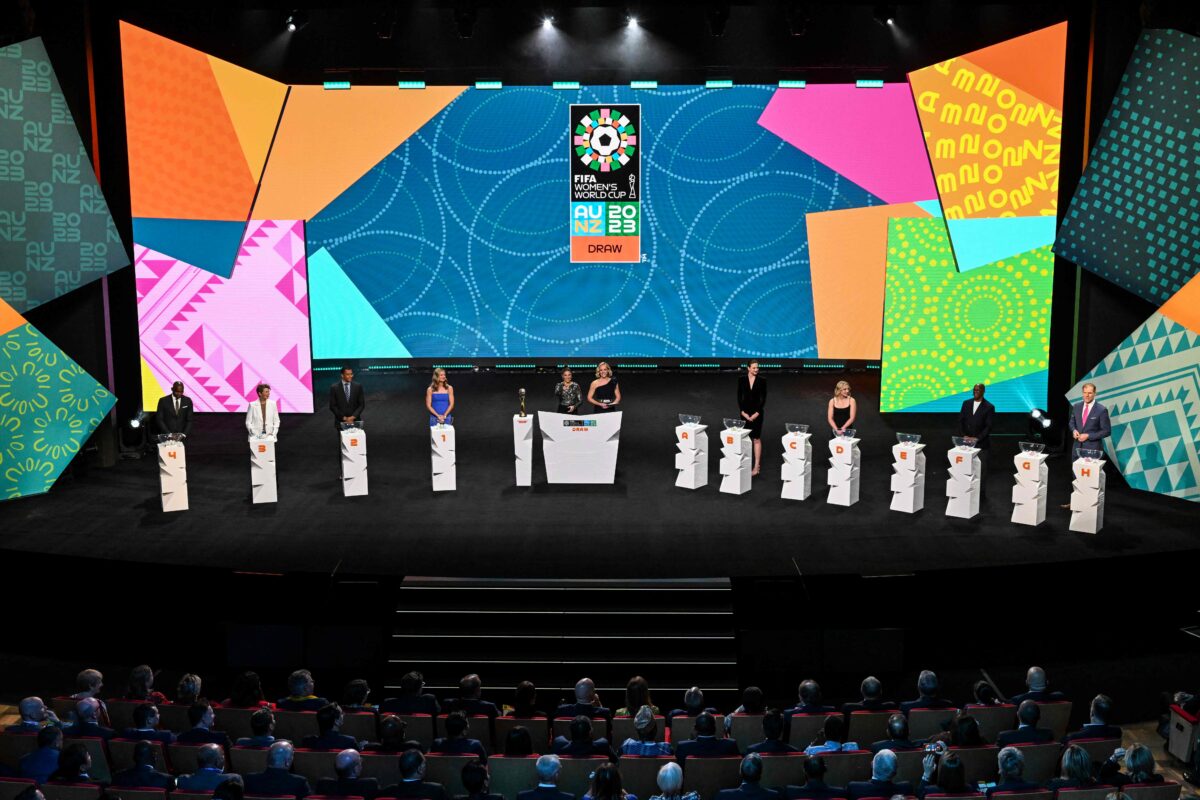The world gets to meet Melchie Dumornay this summer
Haiti has shocked the world, qualifying for their first-ever women’s World Cup.
Les Grenadières got two goals from the outstanding Melchie Dumornay and then hung on for dear life to upset Chile at the Women’s World Cup Play-off Tournament on Tuesday, securing a spot in this summer’s tournament.
This wasn’t in the script at the start of World Cup qualifying. Haiti was considered a longshot to have this opportunity after being drawn into a CONCACAF W Championship group with the U.S. women’s national team, Mexico, and Jamaica.
A stunning 3-0 win over Mexico in that group was enough to send them to this playoff, and after a 4-0 rout of Senegal on Saturday, they faced a vastly experienced Chilean side that had qualified for France 2019.
An even first half saw Chile trying to hoard possession in the hopes to break down Haiti, who in turn seemed poised to break out on the counter at any time.
A game played this evenly will often be settled by a big-time player, and the ace up Haiti’s sleeve answered the call. Dumornay, the 19-year-old who will join the list of global superstars at Lyon in a summer transfer, gave Haiti the lead in first-half stoppage time.
It started simply, as Dumornay won the ball from Karen Araya at midfield, then burst away from Yessenia Lopez. After playing a long-range one-two with Roselord Borgella, and with no Chilean defender slowing her charge to goal, Dumornay was on the ball inside the box.
Despite a hefty shoulder check from Carla Guerrero that sent Dumornay tumbling sideways, the young attacker somehow placed the ball into the upper corner, beating Christiane Endler with a wonder goal.
Chile, stunned, nearly gave up a second before the break, with Borgella letting them off the hook with a miss. Borgella then nearly got herself a second assist, chipping the ball to an open Nérilia Mondésir early in the second half, but the Haiti captain couldn’t shape herself to shoot, and the chance evaporated.
Haiti’s momentum took a hit midway through the second half, with Sherly Jeudy stretchered off with a potentially serious-looking knee injury. However, it took some time for Chile to get into a more dangerous tempo. In truth, Haiti goalkeeper Kerly Theus had little to do until an 80th minute save to deny the overlapping Daniela Zamora.
With Chile growing frustrated over what they felt were stalling tactics, Haiti actually offered the bigger late threats. Borgella hit the post, while a Dumornay cross zipped through the goalmouth untouched as Mondésir — while behind pulled back by Isadora Olave — couldn’t reach the service.
That fistful of jersey in Olave’s hand saw referee Salima Mukansanga point to the spot after a VAR check, but Endler kept Chile alive, diving right to save Mondésir’s tame 89th minute spot kick.
That sparked a real urgency in Chile and a loud contingent of Chilean fans at Auckland’s North Harbour Stadium. Cote Rojas nearly gave them the moment they craved, catching Theus off-guard with a header that bounced just barely wide early in a given 11 minutes of stoppage time.
Lopez went even closer two minutes later, uncorking an absolute rocket from nearly 30 yards that Theus just barely tipped onto the crossbar. Chile had three attackers lurking, but the power of the shot sent the rebound beyond any of their runners’ reach, and Haiti escaped.
That proved crucial, as Dumornay made it a brace deep into stoppage time. Late substitute Roseline Eloissant helped them create a break from midfield, and Mondésir did brilliant work to lure several Chilean defenders to her before fooling them all with a pass out to the left, where Dumornay had time and space to slot a second past Endler.
It seemed like icing on the cake, but Chile had other ideas. A hopeful cross from the left should have been easy work, but a miscommunication between Theus and Haiti’s defense saw the goalkeeper miss her late attempt to punch. Suddenly facing an open goal, Rojas maintained her cool to fire home a lifeline in the 11th minute of stoppage time.
That set up a potential grandstand finish, with Endler spending a solid 90 seconds inside the Haiti box for corners and set pieces, but Haiti did just enough to secure their first-ever women’s World Cup berth, and their first in either senior-level World Cup since 1974.
They’ll join England, Denmark, and China in a difficult Group D, but as much as they’ll be considered the outsiders for qualification, their opponents will not exactly be comfortable seeing the problems Dumornay, Borgella, and Mondésir pose going forward.
[lawrence-related id=14298,14290,14344]
